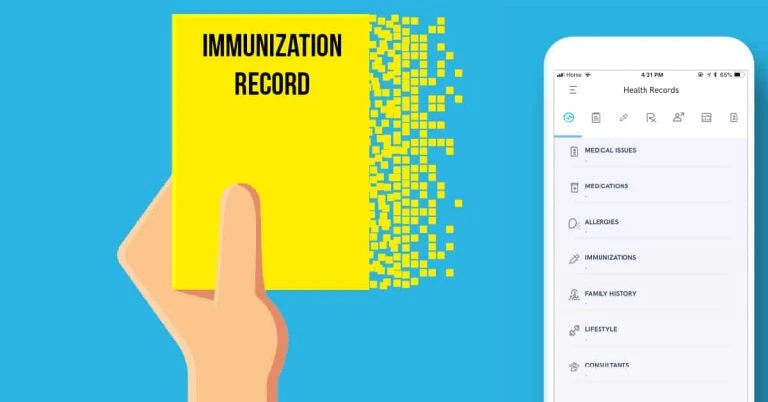Care& vs. Traditional Family Doctors: What’s the Difference?
Care& vs. Traditional Family Doctors: What’s the Difference?
In today’s evolving healthcare landscape, Torontonians face increasingly complex choices when seeking primary care. With long wait times to see traditional family doctors and overcrowded walk-in clinics, many residents are exploring alternative models that better align with their busy lives and health needs.
At Care& Family Health, we frequently hear from patients who are confused about the differences between our Nurse Practitioner-led model and traditional physician-based care. Many wonder: Can I receive the same quality of care? What unique benefits might each approach offer? And critically, which model might better serve my specific health needs?
This article explores the key differences between Care&’s innovative healthcare approach and the traditional family doctor model, helping you make an informed decision about your primary healthcare provider.
The Current State of Primary Care in Toronto
Toronto’s primary care landscape presents significant challenges for residents seeking consistent, accessible healthcare:
- Only 94% of Torontonians report having a regular healthcare provider, leaving hundreds of thousands without consistent care
- Wait times to see family doctors average 7-10 days for non-urgent issues
- Many family doctors have closed practices, no longer accepting new patients
- Walk-in clinics often involve hours of waiting with limited continuity of care
These realities leave many Torontonians caught in a frustrating cycle: unable to access timely primary care, turning to emergency departments for non-emergency concerns, and experiencing fragmented care that lacks coordination or continuity.
Understanding the Traditional Family Doctor Model
Structure and Training
Traditional family doctors (also called family physicians) complete:
- 3-4 years of medical school after undergraduate studies
- 2-3 years of residency in family medicine
- Optional additional fellowship training in specialized areas
Family physicians are licensed to practice the full scope of medicine, from diagnosing complex conditions to prescribing all medications and performing certain procedures.
Practice Model and Patient Experience
In the conventional family doctor model:
- Appointment Structure: Typically brief 10-15 minute appointments, often focused on addressing a single primary concern
- Accessibility: Patients commonly face weeks-long waits for non-urgent appointments
- Availability: Most traditional practices offer limited evening or weekend hours
- Continuity: Patients generally see the same doctor, building a long-term relationship
- Communication: Often limited to in-person visits, with restricted phone or email access
- Practice Size: Average family physician manages 1,500+ patients
- Health Records: Many practices still use paper records or limited digital access systems
Strengths of the Traditional Model
Traditional family doctor practices excel in several important areas:
- Breadth of Medical Training: Comprehensive medical education allows for handling complex diagnostic challenges
- Familiarity: Many patients value the traditional doctor-patient relationship they’ve grown up with
- OHIP Coverage: Services are covered by provincial health insurance
- Specialist Referral Network: Established relationships with specialists for coordinated care
The Care& Nurse Practitioner-Led Model: A Modern Alternative
Structure and Professional Qualifications
Nurse Practitioners (NPs) at Care& complete:
- 4-year Bachelor of Science in Nursing degree
- Several years of clinical nursing experience
- 2-3 year Master’s degree with specialized NP training
- Rigorous certification and licensing requirements
NPs are qualified to:
- Diagnose and treat common illnesses and injuries
- Order and interpret diagnostic tests
- Prescribe most medications (with some controlled substance limitations)
- Manage chronic conditions
- Provide preventative care and health education
- Refer to specialists when needed
Practice Model and Patient Experience
Care&’s approach differs significantly from traditional practices:
- Appointment Structure: Unrushed 30-60 minute appointments that start on time, allowing for addressing multiple health concerns
- Accessibility: Typically same-week appointments, often same or next-day at one of our locations
- Availability: Extended hours that accommodate work schedules
- Continuity: Members establish a relationship with a primary NP while having access to the entire Care& team
- Communication: Multiple communication channels including in-person, video, phone, and secure messaging
- Practice Size: NPs maintain smaller patient panels (typically 500-800 patients) enabling more personalized attention
- Health Records: Comprehensive digital records with patient access through the Care& app
The Membership Advantage
Unlike fee-for-service or OHIP-billed traditional practices, Care&’s membership model includes:
- Unlimited Appointments: No restrictions on visit frequency, encouraging proactive health management
- Virtual Care Access: Telemedicine options for convenience and accessibility
- On-site Lab Services: Blood work and other specimen collection available at our locations
- Digital Health Platform: Access to your complete health record, appointment scheduling, secure messaging, and health tracking through our mobile app
- Care Navigation: Support in coordinating referrals, specialist appointments, and external healthcare services
Key Differences: Care& vs. Traditional Family Doctors
1. Appointment Duration and Attention
Traditional Family Doctors:
Brief 10-15 minute appointments often mean patients must prioritize a single concern, with limited time for questions or discussion of lifestyle factors affecting health.
Care& Nurse Practitioners:
Appointments typically last 30 minutes for routine visits and up to 60 minutes for complex issues or comprehensive physicals. This allows for:
- Addressing multiple health concerns in one visit
- Thorough exploration of symptoms and health history
- Education about conditions and treatment options
- Discussion of preventative health strategies
- Time for questions and clarification
Many patients report that this unrushed approach leads to more collaborative care decisions and better understanding of their health conditions.
2. Accessibility and Wait Times
Traditional Family Doctors:
- Average wait time of 7-10 days for routine appointments
- Limited same-day acute care availability
- Restricted after-hours access
- Difficulty finding family doctors accepting new patients
Care& Nurse Practitioners:
- Typically offers same or next-day appointments at one of our locations
- Unlimited appointment frequency for members
- Extended hours including early morning options
- Currently accepting new patients at multiple locations
- Virtual appointment options for remote care
This enhanced accessibility means health concerns can be addressed promptly before they escalate to more serious conditions.
3. Continuity and Comprehensiveness of Care
Traditional Family Doctors:
While traditional practices offer continuity with one doctor, limited appointment availability often means patients turn to walk-in clinics for acute needs, fragmenting their care record.
Care& Nurse Practitioners:
Members establish a relationship with a primary NP while having access to the entire Care& team. All providers share a comprehensive electronic health record, ensuring continuity even when seeing different practitioners. The Care& app further enhances continuity by giving patients access to their complete health information.
4. Preventative Focus vs. Reactive Care
Traditional Family Doctors:
Time constraints and the fee-for-service model often emphasize treating existing conditions rather than prevention.
Care& Nurse Practitioners:
With more appointment time and unlimited visits, NPs place significant emphasis on:
- Comprehensive health risk assessments
- Personalized preventative care plans
- Health coaching and lifestyle modification support
- Regular screening based on age and risk factors
- Proactive chronic disease management
This preventative approach aims to identify health risks before they develop into serious conditions.
5. Collaborative Approach
Traditional Family Doctors:
Typically practice independently with limited team integration.
Care& Nurse Practitioners:
Work within a collaborative care team model that includes:
- Multiple Nurse Practitioners with varied specialties
- Consulting physicians when needed
- Care coordinators to help navigate the health system
- Lab services integration
- Digital health team supporting telehealth infrastructure
This team-based approach allows for more comprehensive care that addresses multiple dimensions of health.
6. Payment Model and Coverage
Traditional Family Doctors:
Services covered by OHIP with limited billing for uninsured services.
Care& Nurse Practitioners:
Membership-based model (annual subscription) not covered by OHIP:
- Annual membership fee provides unlimited access
- Pay-per-use options available for occasional care needs
- No additional fees for virtual appointments
- Transparent pricing structure with no surprise bills
While representing an additional healthcare cost, many members find the enhanced access, comprehensive care, and convenience deliver significant value.
7. Technology Integration
Traditional Family Doctors:
Varying levels of technology adoption, with many practices still using paper records or basic electronic systems with limited patient access.
Care& Nurse Practitioners:
Fully integrated digital health platform including:
- Comprehensive electronic health record
- Patient access to complete medical information
- Mobile app for appointment scheduling, secure messaging, and health tracking
- Virtual care infrastructure for seamless telemedicine
- Digital prescription management with one-click refills
This technological integration enhances care coordination, reduces administrative burden, and empowers patients with information access.
Who Can Benefit Most from Each Model?
While both models offer quality primary care, certain patient types may find particular advantage in one approach over the other.
Patients Who May Prefer Traditional Family Doctors:
- Those with complex medical conditions requiring specialist physician oversight
- Patients with financial constraints who rely exclusively on OHIP coverage
- Individuals who rarely need to see a healthcare provider
- Those who prefer established medical traditions and conventional approaches
Patients Who May Benefit from Care&’s NP-Led Model:
- Busy professionals who value convenience, on-time appointments, and virtual care options
- Individuals managing chronic conditions requiring frequent check-ins and adjustments
- Health-conscious people seeking a preventative approach and wellness guidance
- Families wanting comprehensive care for multiple members under one healthcare roof
- Those frustrated by limited access and brief interactions in traditional settings
- Patients who appreciate digital health tools and want more control over their health information
- People new to Toronto struggling to find family doctors accepting patients
The Science Behind Nurse Practitioner Care
Research consistently demonstrates the quality and effectiveness of Nurse Practitioner-led primary care:
- A systematic review in the BMJ found that NPs provide equal or better health outcomes compared to physicians for a wide range of primary care services
- Patient satisfaction scores are typically higher for NP care, with studies showing patients appreciate the additional time, attention to education, and holistic approach
- A Canadian study found that NPs excel at chronic disease management, particularly for diabetes, hypertension, and COPD
- Research shows that NPs are more likely to discuss prevention strategies and address psychosocial dimensions of health
In Ontario specifically, multiple studies have documented that Nurse Practitioners deliver high-quality primary care that meets or exceeds provincial standards.
Making the Right Choice for Your Health
Selecting a primary care provider is a deeply personal decision that should align with your health needs, preferences, and practical considerations:
Consider Your Health Complexity:
Do you have multiple chronic conditions requiring complex management, or are you generally healthy with occasional care needs?
Evaluate Your Schedule:
How important are flexible appointments, virtual options, and minimal wait times to your lifestyle?
Assess Your Communication Preferences:
Do you value extended time for questions and education during appointments?
Review Your Financial Situation:
Are you able to invest in a membership model, or do you require exclusively OHIP-covered services?
Reflect on Your Healthcare Goals:
Are you seeking primarily reactive care for immediate issues, or a proactive approach focused on prevention?
There’s no universally “best” choice—the ideal model depends on your unique circumstances and priorities.
The Hybrid Approach: Using Both Models
It’s worth noting that healthcare isn’t an either/or proposition. Many Torontonians leverage multiple care options to meet their diverse needs:
- Some maintain a traditional family doctor for complex care while using Care& for more routine and preventative services
- Others use Care& as their comprehensive primary care solution but access specialist physicians through referrals when needed
- Families might have different members using different models based on individual health requirements
The healthcare landscape continues to evolve, with both traditional and innovative models adapting to better serve patient needs.
Conclusion: A Shared Goal of Excellent Care
While Care&’s Nurse Practitioner model and traditional family doctor practices differ in structure, approach, and accessibility, they share a fundamental commitment to providing quality healthcare.
At Care& Family Health, we believe that healthcare should be accessible, comprehensive, and patient-centered. Our model addresses many of the frustrations Torontonians experience with traditional primary care while maintaining clinical excellence through highly qualified Nurse Practitioners.
Whether you choose a traditional family doctor, Care&’s innovative model, or a combination of both, the most important factor is finding care that meets your needs, respects your time, and supports your health goals.
For those interested in exploring if Care&’s approach might better serve your healthcare needs, we welcome you to learn more about our membership model and the comprehensive services we provide at our Lawrence Park and Yorkville locations.
Frequently Asked Questions
Can Nurse Practitioners provide the same level of care as family doctors?
Yes, Nurse Practitioners are highly qualified primary care providers who can diagnose and treat most common conditions, order and interpret diagnostic tests, prescribe medications, and provide preventative care. Research demonstrates that NPs deliver care with outcomes equal to or better than physicians for a wide range of primary care services. The main differences lie in the approach (NPs typically spend more time with patients and focus more on education) and certain limitations around prescribing specific controlled substances.
What happens if I need care that is beyond a Nurse Practitioner’s scope of practice?
Care& has established relationships with consulting physicians and specialists throughout Toronto. If you require care beyond an NP’s scope, your provider will refer you appropriately while continuing to coordinate your overall care. Our electronic health record system ensures seamless information sharing with specialists to maintain continuity of your care plan.
Is the Care& membership fee covered by OHIP or private insurance?
The Care& membership fee is not covered by OHIP. Some patients may be able to claim a portion of their membership through private health insurance plans or Health Spending Accounts, though coverage varies significantly between providers. Many members view their subscription as an investment in more accessible, comprehensive healthcare that complements their OHIP coverage.
How does Care& work with my existing specialists or other healthcare providers?
Care& is designed to integrate smoothly with other components of your healthcare team. Your Nurse Practitioner can receive and review reports from specialists, coordinate follow-up care, and manage referrals to additional services when needed. Through the Care& app, you can access and share your health information with other providers, ensuring everyone involved in your care has a complete picture of your health.
Can I try Care& before committing to a membership?
Yes, Care& offers pay-per-use appointments for those who want to experience our approach before committing to an annual membership. This allows you to meet with a Nurse Practitioner, explore our facilities, and test our digital health platform. Many patients start with a single appointment and later transition to membership after experiencing the benefits of our comprehensive care model.
Less Wait Time, More Face Time
Visit www.careand.ca to register
Contact Information:
📞 Phone: +1-647-951-4770
📧 Email: helpdesk@careand.ca
🌐 Website: www.careand.ca
Disclaimer:
This article is for informational purposes only and does not constitute medical advice. Always consult with a qualified healthcare provider for personal medical guidance. The information provided is general in nature and may not apply to individual circumstances.







